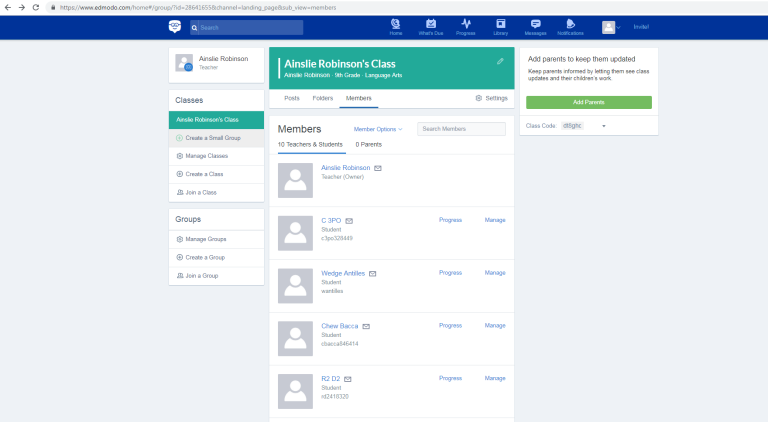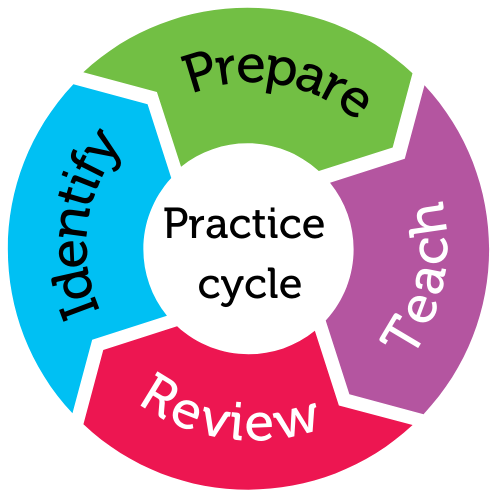
For student year
Helps students to
- be supported across settings
Helps teachers to
- build partnerships
- understand their students
Summary
Students may not always communicate with their parents/carers about what is happening at school, or with their teachers about what is happening at home. If parents/carers and teachers don’t know about students’ issues in areas such as relationships, bullying, homework, and assignments, they can’t provide support in these areas.
Home–school communication involves a student’s parents/carers and teachers sharing important information about the student on a regular basis to support the student’s success at home and school. A strong partnership between home and school helps parents/carers and teachers to provide consistent support across home and school settings.
Home–school communication can also help parents/carers support transitioning students with other aspects of entering high school, such as taking the appropriate materials every day for each subject and being prepared for changes to timetables for special events like sporting carnivals.
Teachers can foster strong partnerships by providing parents/carers with clear guidance and up-to-date information about student progress and homework. Similarly, parents/carers can provide information that will help teachers to develop students’ education plans and understand their social and emotional wellbeing.
How the practice works
Watch this video to learn more.
Duration: 3:26
Australian Professional Standards for Teachers related to this practice
4.1 - support student participation
4.3 - manage challenging behaviour
7.3 - engage with the parents/carers
For further information, see Australian Professional Standards for Teachers AITSL page
Preparing to teach
Teenage years are a tough time for any child. For a teenager on the autism spectrum they will looking at their whole identity and navigating the social aspects of school. Unfortunately, students on the autism spectrum are more likely to be bullied at school compared to a neurotypical student. Having robust home-school communication allows the parents and teachers to keep track of a students well-being if anyone is concerned about their behaviour.
Before meeting with parents/carers, identify a range of communication channels you could use in home–school communication. The channels should suit a range of preferences and needs.
Why home–school communication is important
Example
When a parent/carer says, ‘Do you have any homework to do today?’ they mean, ‘Do you have any homework that you should do today because you have assignments due soon, or upcoming tests that you should study for, or other homework that is due soon that you should get started on?’
A student on the autism spectrum may interpret the question as, ‘Were you assigned any homework today?’ or, ‘Do you have any homework to do today because it is due tomorrow?’
The student’s answer might genuinely be ‘no’.
Example
A student might tell a parent/carer they have no homework because they are:
- avoiding a task they don’t understand
- unsure where to start on an assessment task
- unsure/forgot what was asked of them
- afraid of failure.
Strong home–school communication helps parents/carers to support students to successfully complete homework, assignments, and test preparation.
It works better if the teacher:
- uses clear and accessible language, avoiding education jargon
- finds a common ground on the type and extent of home–school communication
- offers a range of communication channels to parents/carers, e.g. meetings, phone calls, emails
- doesn’t take criticisms personally – parents/carers of students on the autism spectrum often experience intense stress and may have a history of negative encounters with schools
- acknowledges the perspectives of parents/carers
- ensures that home–school communication is constructive and positive.
It doesn't work if:
- home–school communication is mainly negative.
Example
Below is an example of a channel that helps build strong home–school communication – an online tool that teachers can use to keep parents up to date.

In the classroom
Meet with parents/carers at the start of the school year
- Discuss parent's preferred method of communication and offer a range of communication channels, e.g.:
- a communication book
- a class website
- regular meetings
- an email address or phone number.
- Advise parents/carers what information will be communicated and how, focusing particularly on homework and assignments.
- Ensure parents/carers have adequate instructions and resources if a communication channel is technology-based.
- Inform parents/carers about all opportunities for formal meetings and engagements.
Implement
- Review communication with parents/carers each school term. Identify any difficulties and revise accordingly.
- Regularly share information about students with parents/carers, helping them to understand what their child achieves in class.
- Consider what information from parents/carers might assist classroom and instructional planning, e.g. special interests that may help to motivate a student.
- Provide regular updates about homework and assignments.
Continually review
- Review home–school communication throughout the school year.
- Mention communication strategies during hand-over to other teaching staff.
- Make suitable adjustments during the year and for the next year.
Practice toolkit
Practice implementation planner template
We know it's not always easy to keep track of what's working and what isn't. So, we've created this template for you to record and reflect on what you're doing to create more inclusive classrooms. The implementation planner contains:
- guidance around goal setting
- a reflection section (what worked, didn’t work, what to change, and next steps)
- prompting questions.
Implementation planner with examples
Set your professional learning goal for:
Share information through home–school communication
Benefits of goal setting
Setting, working towards, and reflecting on goals helps you grow professionally and improve your practice. You can access AITSL learning resources for teachers to learn more about:How to set goals
The Australian Institute for Teaching and School Leadership recommends using the SMART matrix to frame your goal setting.SMART goals refers to goals that are:
- Specific
- Measurable
- Achievable
- Relevant
- Time-phased
Resources
Share information through home-school communication - Practice Brief
Related Practices

Foster school connectedness using the WISE model
TEACHING PRACTICE
For student years
Helps students to
- increase self-esteem
- improve resilience
- increase school connectedness
This practice is from the core research project
Learning Cycle

